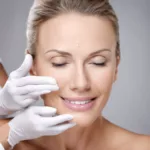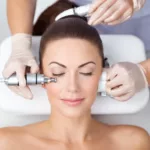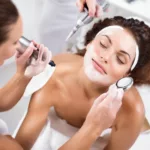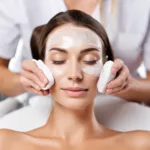7 December 2023
Discover the Benefits, Risks, and What to Expect from Microdermabrasion
Microdermabrasion is a popular dermatology procedure that offers a range of benefits for the skin. This article will delve into the world of microdermabrasion, exploring its different types, the benefits it provides, and what to expect during and after the procedure. Whether you’re looking to improve your overall complexion, reduce signs of aging, or treat specific skin concerns, microdermabrasion may be the solution you’ve been searching for.
Benefits of Microdermabrasion
Microdermabrasion offers numerous benefits for the skin, making it a sought-after procedure for those looking to improve their complexion. By removing the top layer of skin and stimulating the production of new cells, microdermabrasion can:
1. Improve overall complexion: Microdermabrasion helps even out skin tone and brighten a dull complexion, leaving you with a radiant glow.
2. Reduce signs of aging: The procedure can improve skin texture and firmness, reducing the appearance of fine lines and wrinkles.
3. Treat acne scars: Microdermabrasion can fade acne scars and improve the overall appearance of acne-prone skin.
4. Minimize large pores: By clearing clogged pores and promoting cell turnover, microdermabrasion can reduce the appearance of large pores.
5. Even out discolored skin: Microdermabrasion can help fade hyperpigmentation and even out skin tone, giving you a more uniform complexion.
Types of Microdermabrasion
There are two main types of microdermabrasion procedures: crystal microdermabrasion and diamond microdermabrasion. Both methods effectively exfoliate the skin, but they differ in their approach.
1. Crystal microdermabrasion: In this method, microfine crystals are shot onto the skin and vacuumed back up, providing a high-powered scrub that removes the top layer of skin.
2. Diamond microdermabrasion: This crystal-free method uses a diamond-tipped wand to exfoliate the skin, offering a gentler yet effective approach.
Who Is Microdermabrasion Good For?
Microdermabrasion is suitable for most individuals in good health, but it is particularly beneficial for those with specific skin concerns or goals. It can be a good choice if you have:
1. Sun-damaged skin: Microdermabrasion can help repair and rejuvenate sun-damaged skin, reducing the appearance of sunspots and fine lines.
2. Acne scars: The procedure can fade acne scars and improve the overall texture of acne-prone skin.
3. Large or clogged pores: Microdermabrasion can help minimize the appearance of large pores by clearing out debris and promoting cell turnover.
4. Lines and wrinkles: By stimulating collagen production, microdermabrasion can reduce the appearance of fine lines and wrinkles.
5. Uneven complexion: Microdermabrasion can even out skin tone and fade hyperpigmentation, giving you a more uniform complexion.
Who Should Not Get Microdermabrasion?
While microdermabrasion is generally safe, there are certain circumstances in which it is not recommended. Avoid microdermabrasion if you have:
1. An active cold sore outbreak: The procedure can potentially spread the virus and worsen the outbreak.
2. Moderate to severe acne: If you have active acne, microdermabrasion can irritate the skin and potentially worsen the condition.
3. Open wounds or skin irritations: Microdermabrasion can further damage already compromised skin.
4. Rosacea: The procedure can aggravate rosacea symptoms and lead to increased redness and sensitivity.
5. A suspicious mole: It is essential to have any suspicious moles or skin growths evaluated by a dermatologist before considering microdermabrasion.
How Long Does Microdermabrasion Take?
A microdermabrasion session typically takes between 15 to 30 minutes. The procedure begins with a cleansing of the face to prepare the skin. Afterward, the microdermabrasion technique is applied, either using crystals or a diamond-tipped wand, depending on the chosen method.
Following the procedure, the technician will cleanse the skin to remove any remaining crystals and apply moisturizer and sunscreen to protect the treated area.
The duration of the entire treatment may vary if microdermabrasion is part of a full facial package, which often includes additional steps such as a mask and facial massage. In such cases, expect to spend around 60 to 90 minutes in the treatment chair.
How Many Sessions Are Needed?
The number of microdermabrasion sessions required depends on individual skin goals and concerns. While a single session can provide immediate benefits, a series of treatments is often recommended for more significant and long-lasting results.
The number and frequency of sessions will be determined by your technician based on your skin’s needs and goals. Typically, six to ten treatments, spaced one to two weeks apart, are recommended for optimal results.
While you may notice improvements after a single session, it is important to continue with the recommended treatment schedule to achieve the desired outcome.
Cost of Microdermabrasion
The cost of microdermabrasion can vary depending on various factors such as location and the extent of the treatment. On average, a single session can range from $75 to upwards of $300.
Factors that may influence the cost include the reputation of the provider and the inclusion of additional services within a full facial treatment package. It is advisable to research and consult with different providers to find the best option for your budget and needs.
Can I Do Microdermabrasion at Home?
While there are at-home microdermabrasion kits available, it is important to note that professional treatments offer more significant and reliable results. These kits can provide a gentle exfoliation but may not penetrate as deeply as a dermatologist’s treatment.
If budget constraints are a concern, at-home options can be considered for maintenance between professional sessions. However, for optimal and long-lasting results, professional microdermabrasion is recommended.
Preparing for Microdermabrasion
To prepare for a microdermabrasion session, there are a few steps you can take in the days leading up to the treatment:
1. Avoid aspirin and aspirin-based medications, as they can increase the risk of bruising.
2. Refrain from waxing the treatment area to prevent irritation.
3. Stay out of the sun to avoid sunburn and increased sensitivity.
4. Stop using exfoliating products, Retin-A, and glycolic acid to prevent excessive skin sensitivity.
5. Avoid using topical treatments on the morning of your appointment unless instructed otherwise by your provider. It is best to arrive with a clean face and no makeup if possible.
Side Effects and Risks
Microdermabrasion is generally considered safe when performed by a skincare professional. However, there are potential side effects and risks to be aware of. These include:
1. Bruising: Temporary bruising may occur, particularly if the skin is sensitive or prone to bruising.
2. Dry or flaking skin: After the procedure, the skin may become dry or flaky as it heals and regenerates.
3. Increased sun sensitivity: Microdermabrasion can make the skin more susceptible to sun damage, so it is crucial to use sunscreen and protect the treated area.
4. Mild abrasions: In some cases, minor abrasions may occur, especially if the procedure is not performed correctly.
5. Recurrence of cold sores: If you have a history of cold sores, there is a risk of recurrence following microdermabrasion.
Does Microdermabrasion Hurt?
Microdermabrasion is generally a painless procedure. Most individuals describe the sensation as a rough lick of a cat’s tongue or a gritty facial massage. While there may be some minor tugging on the skin, it should not be painful. If you experience any discomfort during the procedure, it is important to communicate with your technician.
What to Expect After Treatment
After a microdermabrasion session, it is normal for the skin to appear slightly pink, similar to a mild sunburn. This redness typically fades within a few hours. Some individuals may experience tenderness, swelling, or minor bruising, which should also subside within a day or two.
It is advisable to avoid acne treatments, toners, and medicated cleansers immediately after the procedure, as they may cause stinging or burning. Non-medicated cleansers, moisturizers, and makeup can usually be used without any issues. Sunscreen should be applied to protect the skin from sun damage, as it may be more susceptible after microdermabrasion.
The benefits of microdermabrasion are usually temporary, lasting for up to a month. The skin’s natural turnover process will eventually replace the treated skin with new cells. The duration of this process varies but is typically around 40 to 50 days for adults. Regular use of sunscreen can help prolong the results, and follow-up treatments every four to six weeks are recommended to maintain the desired outcome.
Conclusion: A Refreshing Approach to Skincare
Microdermabrasion offers a refreshing approach to skincare, providing a range of benefits for those seeking to improve their complexion and address specific skin concerns. With its ability to even out skin tone, reduce signs of aging, and treat acne scars, microdermabrasion has become a popular choice among individuals looking to enhance their skin’s appearance.
By understanding the different types of microdermabrasion, who it is suitable for, and what to expect during and after the procedure, you can make an informed decision about whether microdermabrasion is right for you. Remember to consult with a skincare professional to determine the best treatment plan for your individual needs and goals. With proper care and maintenance, microdermabrasion can help you achieve the healthy, radiant skin you desire.



